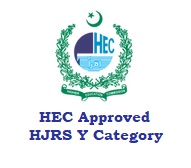Toxicological impact of water pollutants on DNA and tissues of inhabitant fish Labeo dyocheilus of River Kabul, Khyber Pakhtunkhwa, Pakistan
DOI:
https://doi.org/10.47264/idea.nasij/3.2.7Abstract
This investigation evaluated pollution in River Kabul and impact on DNA and histology of intestine, gills, liver, and muscle of Labeo-dyocheilus. Water and fish samples were collected from non-polluted site of Warsak Dam and polluted sites of Amanghar industrial zone and Nowshera city. Sequence of physicochemical parameters in water samples A, B and C was TDS >TSS >EC >TA >Cl >Na >K >pH and heavy metals was Zn >Pb >Cd >Ni >Fe >Mn >Cu >Cr. The parameters in samples A, B and C except TSS were below NEQS proposed limits. The investigation determined geno-toxicological impact of water pollutants in different tissues. DNA damage cells like TCS and comet classes (0, 1, 2, 3, 4) were determined in intestine, gills, liver, and muscle. Sequence of comet classes in tissues was class 0> class 4> class 3> class 2> class 1. Trend of DNA damage in tissues was intestine >liver >gills >muscle. The study investigated histopathological impacts of water pollutants in intestine, liver, gills, and muscle. Trend of lesions in tissues was liver >intestine >gills >muscle. The study confirmed high levels of pollutants like heavy metals and physicochemical parameters in River Kabul, and geno-toxicological and histopathological disorders of water pollutants in Labeo-dyocheilus.
Downloads
Published
Issue
Section
License
Copyright (c) 2022 Muhammad Siraj, Bibi Nazia Murtaza, Amina Sardar, Sidra Tul Muntaha, Pir Asmat Ali, Douglas Chivers

This work is licensed under a Creative Commons Attribution-NonCommercial 4.0 International License.
Please click here for details about the Licensing and Copyright policies of NASIJ.








